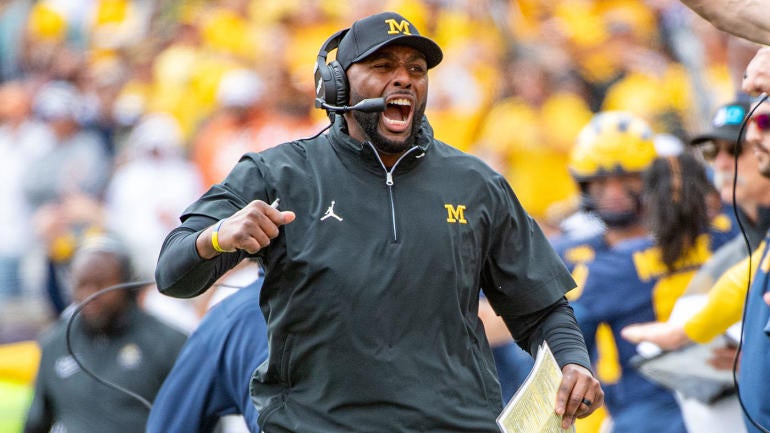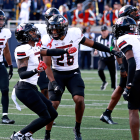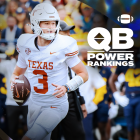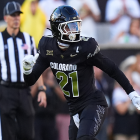
Michigan coach Sherrone Moore has signed a full contract just under nine months after accepting the job, the university announced in a joint statement. Moore, along with some of the team's assistants, had been working under a memorandum of understanding since being elevated from offensive coordinator in January.
Contract details were not released as part of the announcement.
"[Moore] is a proven leader and has been a great ambassador during his seven-plus years representing Michigan," president Santa Ono and athletic director Warde Manuel said in a statement. "Our university and athletic department leadership is behind Coach Moore, his coaching staff and the great student-athletes that compete on the field and in the classroom."
Appearing on the "Conqu'ring Heroes Podcast" earlier in September, Manuel said the two sides were still ironing out a deal but that an agreement would be "wrapped up very soon."
"They're being worked on as we speak," Manuel said. "I've signed a couple of the assistant coaches. You know, we had a transition not only in football, we had a transition in basketball, we're dealing with NCAA matters, we're dealing with the situation with our apparel provider, bringing on legends as shortly as Saturday.
"These things take time, the contracts," he continued. "I mean, they don't just happen overnight and the things that have popped up -- but they're being worked on."
Memorandums of understanding aren't as ironclad as a fully fleshed out contract, though they are a legally binding document. They're often used as a stopgap to give the university and a coach's representatives time to hammer out a more solidified deal.
While it is certainly not the norm, high-profile coaches at big programs do often work for quite a while strictly on MOUs. That often stems from how expedited a coaching search process is compared to an executive of comparable compensation levels in the private sector. It's not at all uncommon for a coach to be hired in early December but not have a full contract signed until the next spring.
Where it becomes a problem is when a school wants to part ways with the coach and a contract is not fully executed. When Florida State fired Willie Taggart in 2019, it became apparent that Taggart had been working on only an MOU for over two years since he was hired in November of 2017, but his buyout was ultimately paid in full by February 2024. Kentucky went through a dispute when it tried to fire basketball coach Billy Gillispie after two seasons. Both sides filed suit and eventually settled at nearly $3 million, about half of what was originally owed to Gillespe.
Another factor is that Michigan currently faces an NCAA investigation into an alleged sign-stealing scheme orchestrated by former staffer Connor Stalions.
The university received its notice of allegations from the NCAA on Aug. 25. Though no details were provided, a previous draft delivered to Michigan accused Moore of deleting more than 50 text message exchanges between himself and Stalions.
Among the possible penalties for Moore, as outlined in the draft, are a show-cause and one-game suspension, since he would be considered a "repeat violator" due to a separate investigation, settled in April, for recruiting violations during the COVID-19 dead period.
NCAA policy gives Michigan 90 days to respond to the notice of allegations, which means the Wolverines have until November to address the situation. After a response, the NCAA could then call a meeting of the Committee on Infractions for Michigan to make its case, but that could take place well after the 2024 season is complete.
















